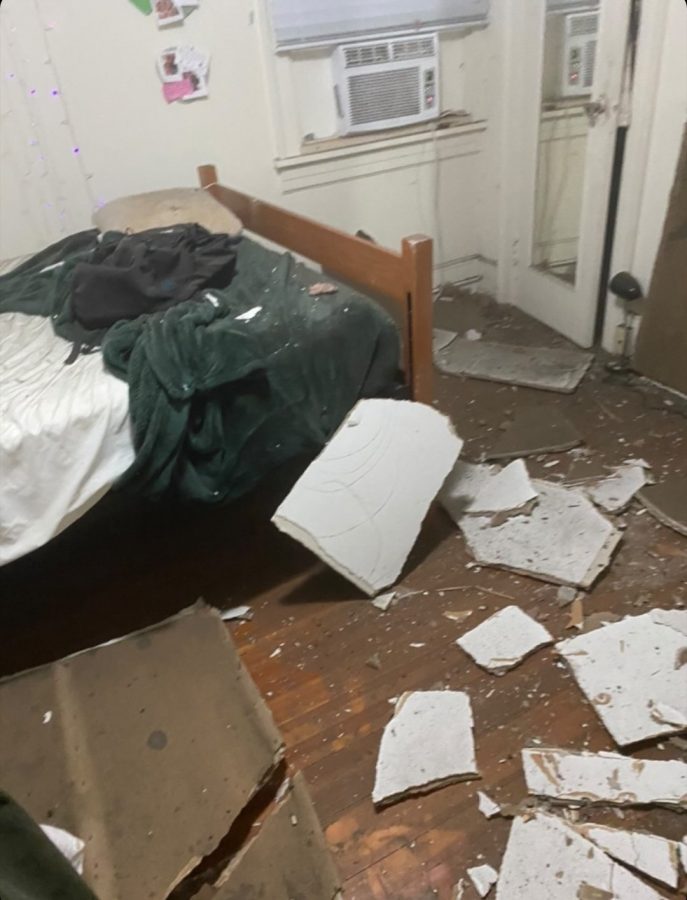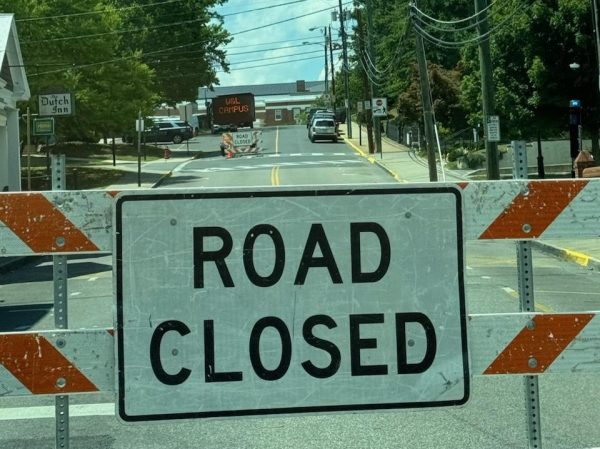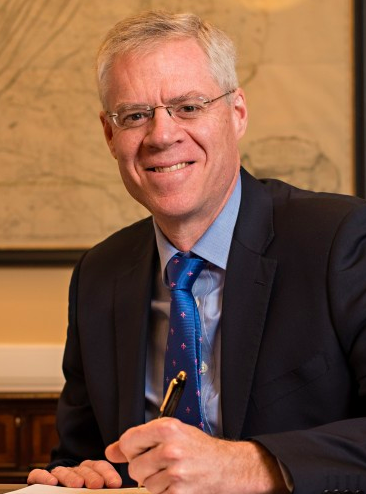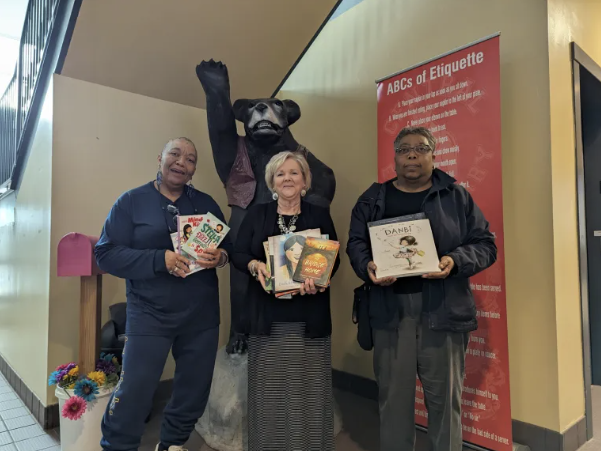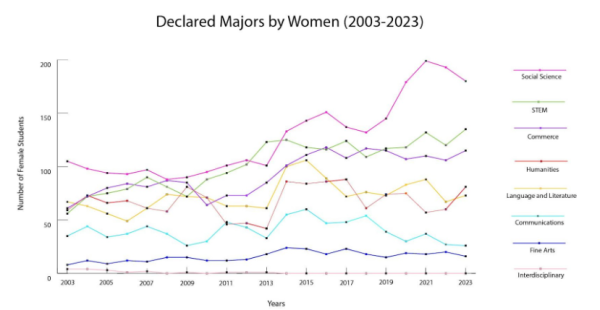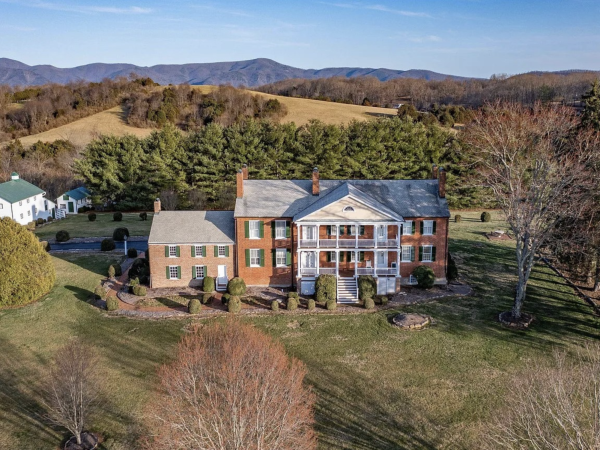Students in Shock after Ceiling Collapses at Latinx Theme House
“It was somewhere that felt like ours.”
March 4, 2021
Angie Gallegos, ‘23, was finishing up her oceanography notes when a little after midnight Feb. 24, the ceiling collapsed in her room in Nuestro Hogar Latino.
“I heard a creak on the wall that’s across from me,” Gallegos said. “Then it moved to the adjacent wall and then it moved up to the ceiling. Then the ceiling collapses.”
While she was not hit by pieces of the ceiling, her belongings were not as fortunate.
“I screamed, and then I panicked,” she said. “The first thing I noticed was my computer was broken, but then I was like, let me get out of here because I don’t want the ceiling to fall on me.”
Andrea Rojas, ‘23, another resident in the house, said she had finished memorizing a poem for Arabic and was about to head to bed when she heard a loud sound.
“I hear like this crunching noise,” Rojas said. “And then I hear a yell, it wasn’t a scream, it was a yell.”
Rojas said she leapt out of bed and waited for Gallegos to come out of her room.
“Normally our doors open easily, but I see her door slowly opening as if there’s a struggle,” she said. “I thought a tree fell through her room or something like that just because of how she came out. And how that cloud of dust followed her.”
Instead of a tree, Rojas said she found white ceiling pieces preventing easy entry into the room.
“The ceiling fell everywhere but her bed,” she said. “It formed an L-shape around her bed.”
Rojas said that was when she called public safety. Meanwhile, Gallegos said she called her parents crying.
“My computer was broken. I called my mom like I can’t do my homework. What am I going to do?” Gallegos said.
Gallegos said she had spent the summer before her first year of college working and cleaning houses with her mom to afford the Macbook Air –her first computer.
“To them it’s something that they can replace within like days, but to me it was something I expected to last my four years at college,” Gallegos said.
Rojas said Public Safety did not offer counseling services to either student that night. And Sidney Evans, the vice president for student affairs and dean of students, said Public Safety did not contact the student affairs dean on call that night.
Evans said in an email that Student Affairs deans became involved around 7:30 am and discussed next steps and support for the residents at 8:30 am on zoom. She said before the zoom meeting she and Tamara Futrell, the dean of the office of inclusion and equity, “immediately arranged” for a loaner laptop for Gallegos.
Rojas and Gallegos said they spoke with Chris Reid, the director of residence life, about their housing options later that morning. The conversation led them to move to Casa Hispanica until repairs on their house are complete.
“I along with several Student Affairs colleagues have been in regular contact with the Nuestro Hogar Latino residents to keep them apprised of the situation, offer support, and resources,” Reid said in an email response. “Their health and safety are our primary concerns at the moment.”
But Kayla Freeman, ‘23, a resident of the house who elected to be all virtual this semester, said she has not been updated on how her belongings will be handled.
“I just hope that they are either returned to me safely or waiting for me the next time I return to campus,” Freeman said.
Tom Kalasky, the executive director of University Facilities, said the school plans to install new drywall ceiling finish in all three bedrooms. He said he anticipates the work to be completed by March 5.
Still the cause of the collapse is unknown.
“Review of Facilities Work Order over the past 9 months does not indicate any reported issues that would have caused this event,” Kalasky said in an email.
Yet Janeth Sandoval, ‘22, a resident of Nuestro Hogar Latino in 2019-2020, said she reported cracks in the ceiling in her preliminary room condition report and pointed out the damages to the community assistant. Sandoval lived in the same room Gallagos lived in.
Virginia Military Institute is constructing an aquatic center behind the Nuestro Hogar Latino, but it is unknown if the blasting operations associated with the project led to the ceiling collapse.
Still the ceiling collapse was not the only problem– last November they found mice.
“I went downstairs to put softener in my clothes and there was a mouse –on its back– on the washer,” Gallagos said.
And finals week the bathroom flooded.
Freeman said these living conditions were one of the reasons she decided to not return to campus.
“We had mice in our house for months and all they did was drop off traps,” she said in a group chat message. “We’ve also had plumbing issues since we moved in, with the worst of those leading to our pipes overflowing [and] flooding all three floors of our house during finals week.”
And after hearing the residents’ stories, some students took to social media to voice their concerns and spread the word.
I felt like I needed to post it somewhere where those who are in greek life/not minorities could see it,” Morgan Patterson, ‘22, said. “I don’t often see these kind of updates anywhere but on the unity/independent group chat.”
Belen Delgado, ‘23, agreed. She said it was important for students outside of the independent and minority communities to speak up.
“It’s extremely important for students to spread awareness about this issue and be an ally because of how the Greek life community responded when rush was pushed back,” she said. “No one pays attention when only BIPOC students advocate for ourselves, so we need white students and students in greek life to speak about these issues too.”
Others said it made them question the costs of university housing.
“What I saw was something you would find in low income housing or a vacant building–not an off campus house for students paying $8,000 to live comfortably.” Alexander Caines, ‘21, said.
But Caines said he was not surprised.
“The Board of Trustees has shown time and time again that they are subtracted from the plights of minority students on campus–quite simply because they don’t pay as much as their white, greek affiliated counterparts,” he said. “Compare the living situation in Casa Hispanica, Nuestro Hogar, or the Washingtonian House to sorority housing and tell me there isn’t preference.”
And this is not the only subpar housing situation involving students of color. Sankofa, a house for “students of the African diaspora and their allies” has faced persistent problems with bed bugs this year.
“Woods Creek and themed housing, spaces overwhelmingly inhabited by independent students, have historically been the most outdated and the most neglected housing options on campus,” Chase Isbell, ‘21, said in an email. “Stories continue to come forward detailing floodings, pest infestations, and now the ceiling collapse at Nuestro Hogar Latino.”
They said this situation illustrates W&L’s strategy for diversity and inclusion on campus.
“Appear from the outside like work is being done, but a look inside reveals just how little thought is given to the needs of this university’s most marginalized,” Isbell said.
Tamara Futrell, the dean of the office of inclusion and equity declined to comment on the situation to “protect student privacy.” Ethan Kipnes, the director of public safety, and David Leonard, the dean of student life, could not be reached before the publishing of this article.
Still Rojas said she hopes to return because it was a safe space.
“It was somewhere that felt like ours.”



